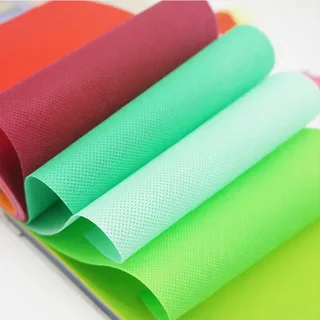Unleashing the Potential of PP/PE Woven Fabric
PP/PE woven fabric, a remarkable material known for its versatility and strength, has revolutionized multiple industries with its wide range of applications. This woven fabric, composed of polypropylene (PP) and polyethylene (PE) polymers, possesses exceptional durability and flexibility, making it a popular choice in diverse sectors. In this comprehensive guide, we will explore the various aspects of PP/PE woven fabric, from its characteristics and production process to its common uses and benefits. Whether you are a manufacturer, supplier, or simply intrigued by this remarkable material, this article will provide you with valuable insights into the world of PP/PE woven fabric.
PP/PE Woven Fabric: A Closer Look
PP/PE woven fabric refers to a type of material produced by weaving polypropylene and polyethylene fibers together. This woven construction enhances the fabric’s strength and durability, making it suitable for numerous applications. The combination of these two polymers brings together their unique characteristics, resulting in a fabric that exhibits exceptional properties.
Characteristics of PP/PE Woven Fabric
PP/PE woven fabric boasts an array of characteristics that contribute to its popularity across various industries. Let’s explore some of its key features:
- Strength and Durability: PP/PE woven fabric is renowned for its high tensile strength and durability. It can withstand heavy loads and resist tears, making it ideal for applications that require robust materials.
- Flexibility: Despite its strength, PP/PE woven fabric remains flexible, allowing for easy handling and adaptability in different environments. Its pliability makes it suitable for a wide range of applications.
- Lightweight: Compared to traditional materials like canvas or cotton, PP/PE woven fabric is relatively lightweight. This feature makes it easier to transport and reduces costs associated with shipping and logistics.
- Water and Chemical Resistance: PP/PE woven fabric exhibits excellent resistance to water and many chemicals. This property makes it suitable for applications where exposure to liquids or hazardous substances is expected.
- UV Stability: The fabric is treated to withstand prolonged exposure to UV radiation, ensuring its longevity even in outdoor applications.
- Breathability: PP/PE woven fabric allows for air circulation, preventing moisture buildup and promoting ventilation in certain applications.
- Customizability: The fabric can be produced in various sizes, colors, and patterns, offering flexibility for different applications and aesthetic preferences.
Production Process of PP/PE Woven Fabric
The production of PP/PE woven fabric involves several stages that transform raw materials into a versatile and durable material. Let’s take a closer look at the typical production process:
- Extrusion of Polymers: The first step involves melting the polypropylene and polyethylene polymers separately in an extruder. This process converts the solid polymers into a molten state.
- Weaving: The molten polymer is then extruded through a spinneret to form individual filaments. These filaments are drawn and stretched to enhance their strength. Multiple filaments are combined and woven together using specialized looms to create the fabric’s structure. know more about Landscap Woven Fabric
- Lamination and Coating: Depending on the intended application, PP/PE woven fabric may undergo additional processes like lamination or coating. Lamination involves bonding additional layers, such as films or foils.






